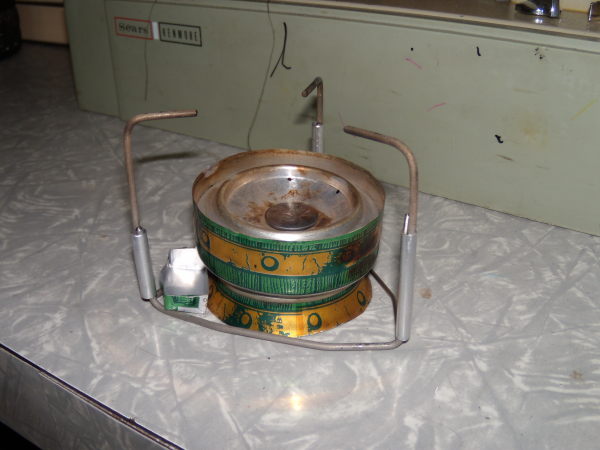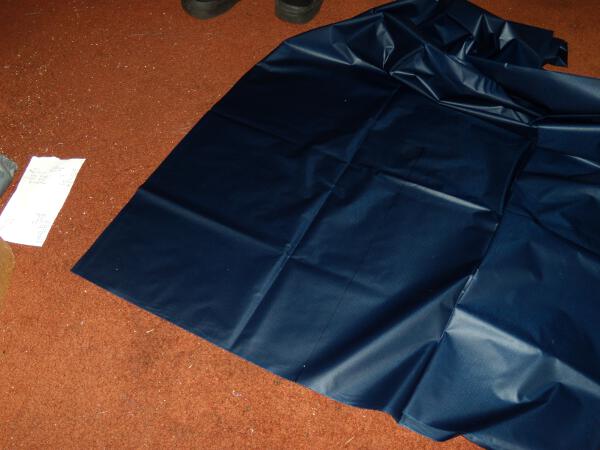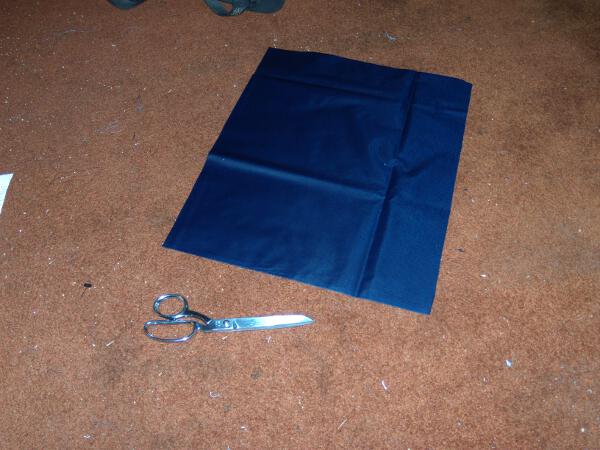Making an ultralight titanium pot stand for your alcohol stove
May 6th, 2012 by h2Today’s project is pretty easy. This is actually the second stand I made, the first was done in a similar manner, but used some old stainless steel bicycle spokes I had lying around. This project is a companion to how to make an alcohol stove priming tray article.

This stand when done will weigh 12,5 grams. The stove weighs about 15.5 grams. With thinner titanium, it would weigh a bit less. And yes, this stuff really works. The stove, stand, priming tray, and penny, weigh in at exactly 28 grams, just under an ounce that is. I carry an extra priming tray and penny, plus of course the windshield and pot and all that.
My entire solo cook set weighs in currently at about 10oz, that’s stove, stand, pot, pot cozy, 2oz alcohol fuel bottle, some condiments/containers and teas, and a spoon. For longer trips, I’d bring a soda bottle for more alcohol, carry that outside the pack of course.
When built in this way, the stand will support pretty much any pot made, from smallest to biggest, within reason of course. 2 liters at least anyway.
Stand Materials and Tools
-
The main component, some type of metal rod. You can get stainless steel bicycle spokes at most local bike shops. 15 gauge are fine, but make sure they are straight gauge, not the more normal 15/17. 16 gauge are also probably strong enough I’d say, and will be lighter, but are harder to find. You can usually buy these singly from quality bike shops. The steel they use in stainless bike spokes is very strong and hard to bend/cut.
For this project, however, a member of backpackinglight.com was nice enough to sell me some spare titanium rod he had available. Since selling the raw material isn’t his main thing (he sells his own pot stands, Zia, using a different design and method for construction) you’ll have to find your own sources if you want to use titanium.
The rods I used were 0.10 and 0.06 inch in diameter. I used the thicker for the two parts that actually hold up the pot, and the thinner for the connector piece that completes the triangle.
After seeing how the materials handled, I think a 0.08″ titanium rod would do quite well for all the legs, and would be solid enough for most pots.
- Two thicknesses of aluminum tubing. I got these from the hobby metals rack at Ace Hardware stores. Always support Ace Hardware, and other locally run and owned hardware stores please, plus Home Depot has zero clue about what you are talking about if you ask them for something like this. I took the rods I was going to use and selected the tubing inner diameter to get as close a fit as possible. Sometimes you may have to slightly flatten the tube to get both rods inserted, depends on the diameter of the rods. In my case, the 7/32″ (stock number 105) and 5/32″ (stock number 103) were perfect fits for two diameters of .1″ and .1 + .06″ respectively.
That’s it for the materials. Titanium is way easier to bend and cut than stainless steel bike spokes, by the way. I used a heavy set of pliers, a vice, and a hack saw to cut the thicker rod ends. plus a file to smooth off the cut ends.
Titanium also has a real positive side affect, aside from being sort of neat and hip, it cools almost instantly, making those burned fingers I’d get from touching the stainless steel pot stand a thing of the past. Steel holds the heat a lot longer. These things get hot by the way, very hot, red hot at times. To me that’s the real advantage of using titanium rod over stainless steel bike spokes.
I also made a template which you’ll see below that had all the key measurements on it to avoid error.
Read the rest of this entry »




